| Product Name | Cyclic AMP EIA Kit (Discontinued) |
| Description |
Quantitative colorimetric detection of cAMP |
| Species Reactivity | Species Independent |
| Platform | Microplate |
| Sample Types | Cell lysates, EDTA Plasma, Heparin Plasma, Saliva, Tissue, Tissue Culture Media, Urine |
| Detection Method | Colorimetric Assay |
| Assay Type | Direct EIA (Enzyme Immunoassay) |
| Utility | EIA kit used to quantitatively measure cAMP present in samples. |
| Sensitivity | 0.64 pmol/ml |
| Assay Range | Regular: 0.617 - 150 pmol/ml. Acetylated: 0.156 - 10 pmol/ml |
| Precision | Intra Assay Precision (Regular): Three human urine samples were diluted with Sample Diluent and run in replicates of 20 in an assay. The mean and precision of the calculated cAMP concentrations were: Sample 1- 56.9 pmol/mL, 8.6% CV Sample 2- 11.9 pmol/mL, 11.3% CV Sample 3- 6.7 pmol/mL, 12.3% CV Intra Assay Precision (Acetylated): Two human plasma samples were diluted with Sample Diluent, acetylated and run in replicates of 20 in an assay. The mean and precision of the calculated cAMP concentrations were: Sample 1- 1.74 pmol/mL, 10.4% CV Sample 2- 0.60 pmol/mL, 11.8% CV Inter Assay Precision (Regular): Three human urine samples were diluted with Sample Diluent and run in duplicates in twelve assays run over multiple days by four operators. The mean and precision of the calculated cAMP concentrations were: Sample 1- 57.1 pmol/mL, 10.0% CV Sample 2- 10.9 pmol/mL, 11.5% CV Sample 3- 6.3 pmol/mL, 11.3% CV Inter Assay Precision (Acetylated): One human urine and two human plasma sample were diluted with Sample Diluent, acetylated and run in duplicates in twelve assays run over multiple days by four operators. The mean and precision of the calculated cAMP concentrations were: Sample 1- 5.22 pmol/mL, 9.8% CV Sample 2- 0.99 pmol/mL, 8.1% CV Sample 3- 0.73 pmol/mL, 15.4% CV |
| Incubation Time | 2.5 Hours |
| Number of Samples | 39 samples in duplicate |
| Other Resources | Kit Booklet , MSDS , Saliva Sample Handling Instructions |
| Field of Use | Not for use in humans. Not for use in diagnostics or therapeutics. For in vitro research use only. |
Properties
| Storage Temperature | 4ºC | |||||||||||||||||||||||||||||||||||||||
| Shipping Temperature | Blue Ice | |||||||||||||||||||||||||||||||||||||||
| Product Type | EIA Kits | |||||||||||||||||||||||||||||||||||||||
| Assay Overview | The Cyclic AMP EIA kit is designed to quantitatively measure cAMP present in lysed cells, EDTA and heparin plasma, urine, saliva and tissue culture media samples. For tissue samples, saliva and urine, where the levels of cAMP are expected to be relatively high, the regular format for the assay can be used. For plasma samples and some dilute cell lysates an optional acetylation protocol can be used. The kit is unique in that all samples and standards are diluted into an acidic Sample Diluent, which contains special additives and stabilizers, for cAMP measurement. This allows plasma, urine and saliva samples to be read in an identical manner to lysed cells. Acidified samples of cAMP are stable and endogenous phosphodiesterases are inactivated in the Sample Diluent. A cAMP standard is provided to generate a standard curve for the assay and all samples should be read off the standard curve. A clear microtiter plate coated with an antibody to capture sheep IgG is provided and a neutralizing Plate Primer solution is added to all the used wells. Standards or diluted samples, either with or without acetylation, are pipetted into the primed wells. A cAMP-peroxidase conjugate is added to the standards and samples in the wells. The binding reaction is initiated by the addition of a sheep antibody to cAMP to each well. After a 2 hour incubation, the plate is washed and substrate is added. The substrate reacts with the bound cAMP-peroxidase conjugate. After a short incubation, the reaction is stopped and the intensity of the generated color is detected in a microtiter plate reader capable of measuring 450 nm wavelength. The concentration of the cAMP in the sample is calculated, after making suitable correction for the dilution of the sample, using software available with most plate readers. | |||||||||||||||||||||||||||||||||||||||
| Kit Overview |
|
|||||||||||||||||||||||||||||||||||||||
| Cite This Product | Cyclic AMP EIA Kit (StressMarq Biosciences Inc., Victoria BC CANADA, Catalog # SKT-209) |
Biological Description
| Alternative Names | 3'-5'-cyclic adenosine monophosphate EIA Kit |
| Research Areas | Cell Signaling, Neuroscience |
| Scientific Background | Adenosine-3’,5’-cyclic monophosphate (cyclic AMP) is a second messenger that plays an important role in intracellular regulation. Specifically, it functions as a mediator of activity of several key hormones including epinephrine, glucagon, and ACTH (1-4). Adenylate cyclase is activated by the hormones glucagon and adrenaline and by G protein. Liver adenylate cyclase responds more strongly to glucagon, and muscle adenylate cyclase responds more strongly to adrenaline. cAMP decomposition into AMP is catalyzed by the enzyme phosphodiesterase. In the Human Metabolome Database there are 166 metabolic enzymes listed that convert cAMP (5). Other biological actions of cAMP include regulation of innate immune functioning (6), axon regeneration (7), cancer (8), and inflammation (9). |
| References |
1. Sutherland, E. W. and Rall, T. W. Fractionation and Characterization of a Cyclic Adenine Ribonucleotide Formed by Tissue Particles. J. Biol. Chem., 232:1077, 1958. 2. Marsh, J.M. Biol. Reprod., 14:30-53, 1976. 3. Korenman, S.G. and Krall, J.F. Biol. Reprod., 16:1-17, 1977. 4. Kelley, D.J., Bhattacharyya, A., Lahvis, G.P., Yin, J.C.P., Malter, J., and Davidson, R.J. Neurosci. Biobehav. Rev., 32(8): 1533-1543, 2008. 5. http://www.hmdb.ca/metabolites/HMDB00058 6. Serezani, C.H., Ballinger, M.N., Aronoff, D.M., and Peters-Golden, M. Am. J. Resp. Cell and Mol. Biol., 39 (2): 127, 2008. 7. Hannila, S.S., and Filbin, M.T. Exp. Neurol., 209(2): 321–332, 2008. 8. Shankar, D.B, Cheng, J.C., and Sakamoto, K.M. Cancer, 104(9):1819-24, 2005. 9. Galea E. and Feinstein, D.L. FASEB J., 13:2125-2137, 1999. |

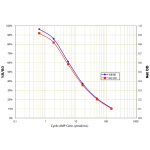
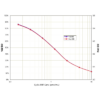
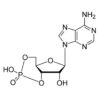
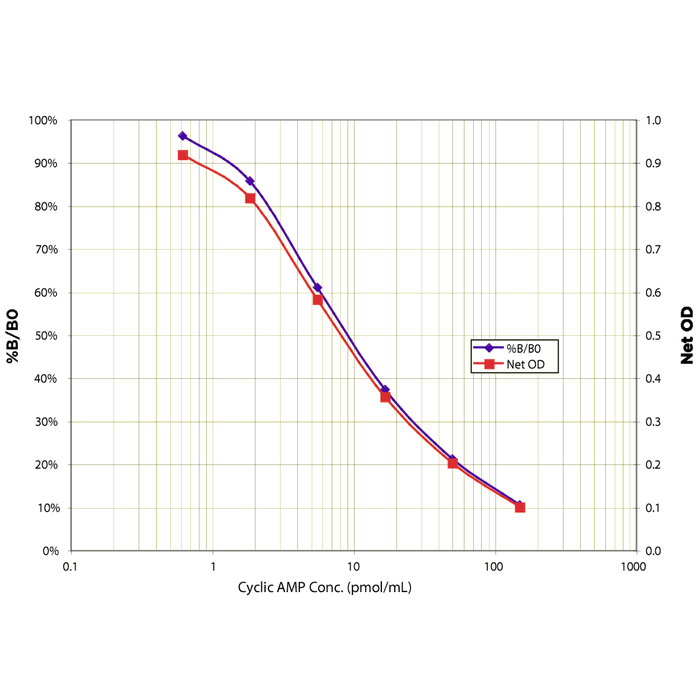
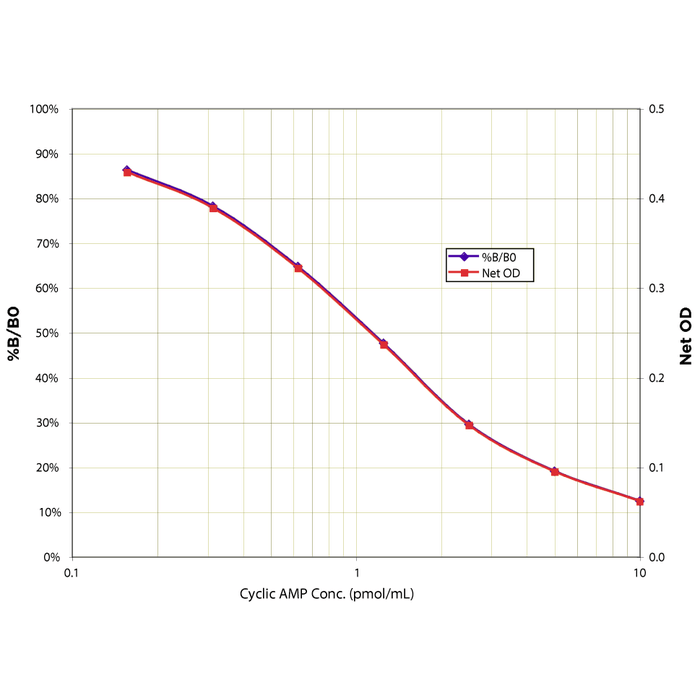
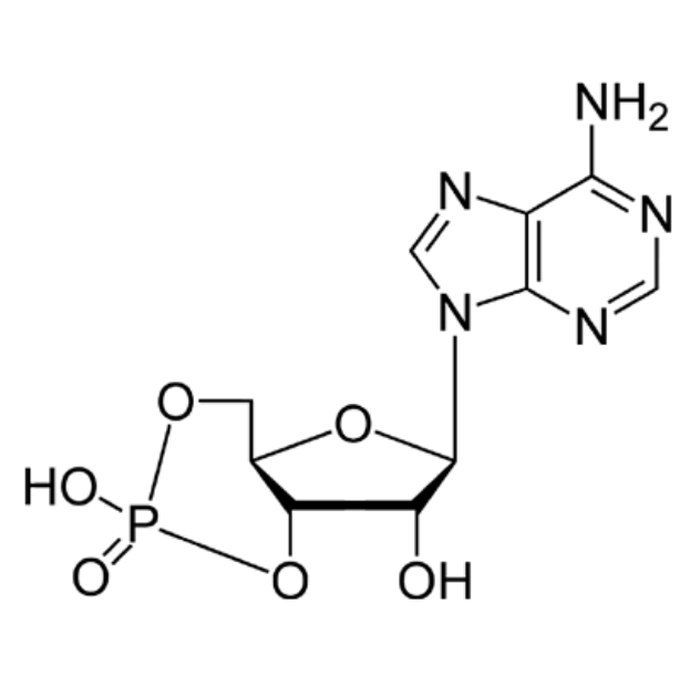
Reviews
There are no reviews yet.